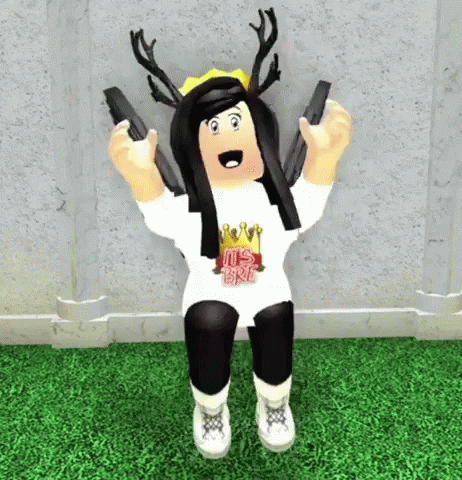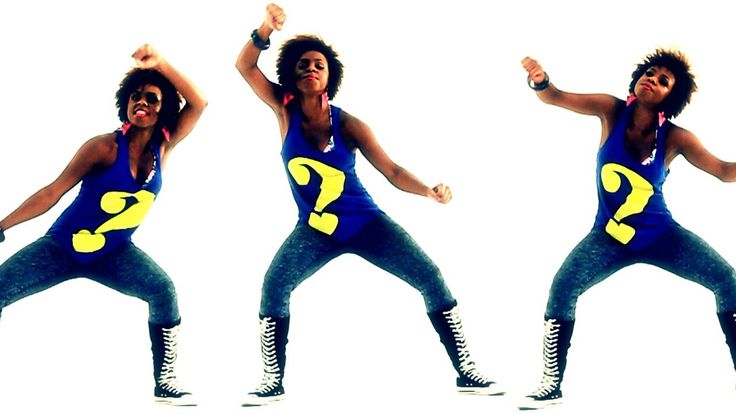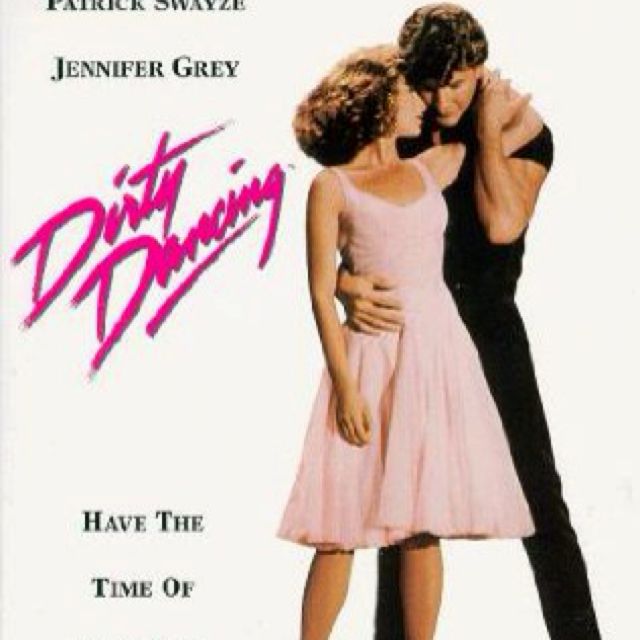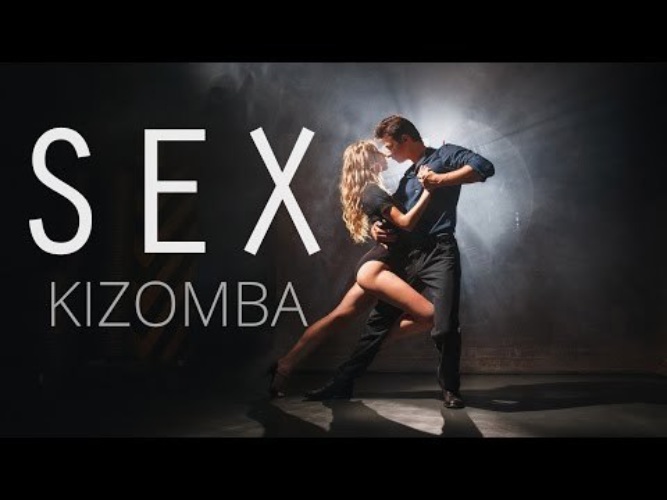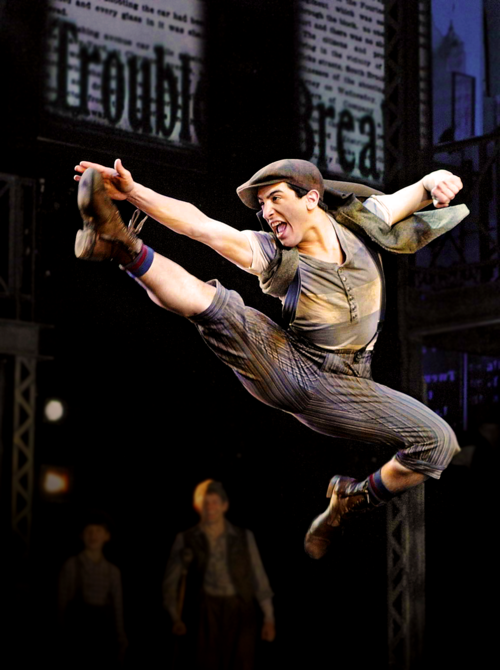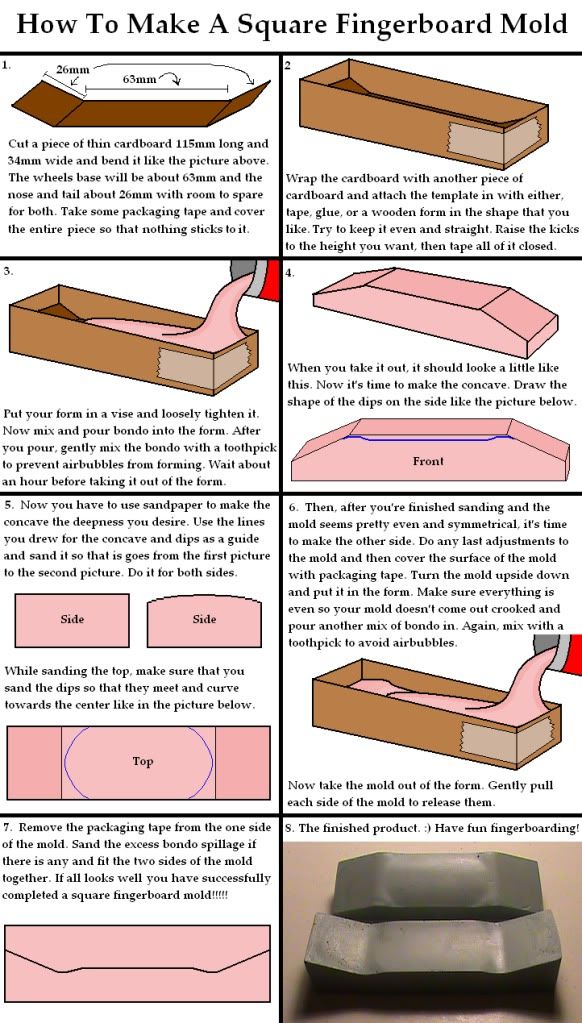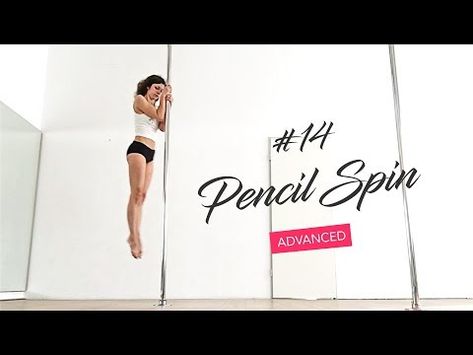How to start a dance team in high school
Top 10 Tips to Make Your Dream Dance Team
Top 10 tips you want to consider while seeking a position on your dream dance squad.
Competitive Dance and a Dance Squad
Dancing is a highly competitive activity. There are various kinds of teams such as Youth/association, middle school, high school, collegiate, all-star, and professional teams. The competition is at local, regional, state, national, and international levels.
Competing dance teams are judged on criteria sic as form, team unison, precision, movements such as jumps, leaps, turns, choreography, enthusiasm, and, the use and visual appeal of props such as pom poms.
In a routine, a squad or team will incorporate a specific dance style (i.e., hip-hop, jazz, or lyrical), technical work (leaps, turns, kicks, splits, jumps), and, depending on the routine, pom-poms, and cheers.
Dance teams are also popular in performance dance, especially at sporting events, most commonly performing during the pre-game and halftime periods (and, in some cases, on the sidelines) of football and basketball games.
A Dance Tryout
Given the immense popularity of dance teams, getting into a favorite dance squad is not an easy task. Every girl in their freshman year wants to be one of the girls in a sparkly top dancing on the sidelines on every Football Friday night throughout the fall. To achieve this dream, a dancer requires dedication, commitment, skills, talent and more.
Anyone interested in being part of a dance squad, both in high school and college is required to attend a tryout. Tryouts are usually held in spring or early summer, so the teams are ready before most sports begin.
There are several aspects to a dance team tryout with the first thing being to know the basic dance techniques that will be used during the season. These techniques usually comprise of toe touches, fouetté turn combinations, kicks, and switch leaps.
One of the critical expectations included in a dance team tryout is that a dancer can quickly master multiple short routines in different styles.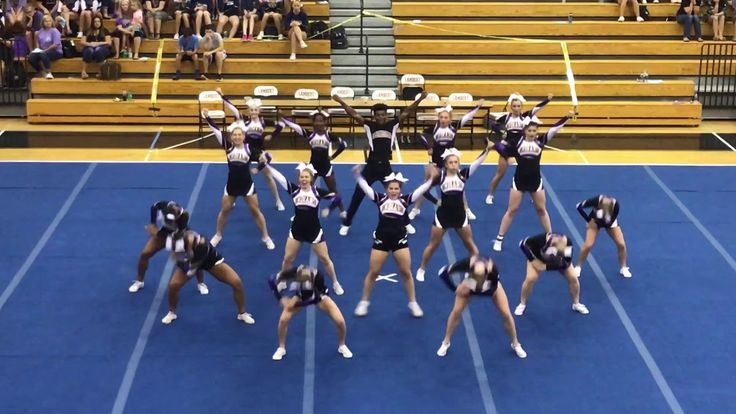 You must know specific styles or forms of dance for certain team tryouts. For example, NDA teams compete with routines that incorporate jazz, hip-hop, and poms styles, so in an audition, you will learn a routine in each of these types of dance and then perform them shortly after that in front of the panel of judges.
You must know specific styles or forms of dance for certain team tryouts. For example, NDA teams compete with routines that incorporate jazz, hip-hop, and poms styles, so in an audition, you will learn a routine in each of these types of dance and then perform them shortly after that in front of the panel of judges.
Tips to conquer Dance Team Tryouts
You have been following a particular dance team for years and have all their performances imprinted in your mind. You even know your favorite dancers by name and signature moves from pieces they've choreographed. Your life mission is to be on the stage with rehearsing, hanging out, training with them. Whichever dream dance team it is – you can be a part of it.
Whether you're trying out for a high school team, or one at the college or professional level, use these tips and tricks to navigate through every step of what can be an emotionally and physically demanding experience.
1. Think About Why You Want to Join a Specific Dance TeamIs it because you look up to certain choreographers and directors? Because you want to grow in that team's style? Because your mission as a dancer aligns with the team? A clear and compelling reason will help you keep your focus on your goal, especially when you run into obstacles or experience hardships during the journey.
You will be interviewed, and knowing answers to why you want to audition for a particular team will make a difference. Considering you will be playing the role of an ambassador when you attend charity events or local events, you need to remember your real purpose for being part of a team, so it shines through in front of fans.
2. Train as if You're Already on the Dream Dance TeamA dance team spends a lot of time together, what with the weeks and months and years of rehearsing and performing and travel. Teams are families and little communities. For a newcomer to belong to a team and be welcomed, they have to vibe with the team, as a dancer and just as important as a person.
To achieve this, you need to belong to that community and one way you can do that are by taking classes from/with members of the team, especially the directors. You will start to get familiar with their style, teaching methods, and personalities. You will also get to know the other members of the team who are taking those classes. Use the lessons to not just learn about the choreographer or director's style by observing them; even analyze how they move, how they take instruction, and how they interpret the music.
Use the lessons to not just learn about the choreographer or director's style by observing them; even analyze how they move, how they take instruction, and how they interpret the music.
Being familiar with the style that is expected will give you confidence, and even if you mess up during auditions, the team and directors will have already seen you train and dance outside of that!
3. Form Relationships with the Team MembersIf part of the reason why you want to join a dream team is the culture and kind of people on it, then you need to understand if in the long term it will resonate with you. Each team has its own culture, a brand, personality, and history that were shaped by its members since the team's beginnings. Do you vibe with it? Remember – the team has to be a good fit for you, too, as much as you are for it. So get to know the team members and you will get a sense of if it's the place for you. And if you can get along with most of the people on the team, you're good.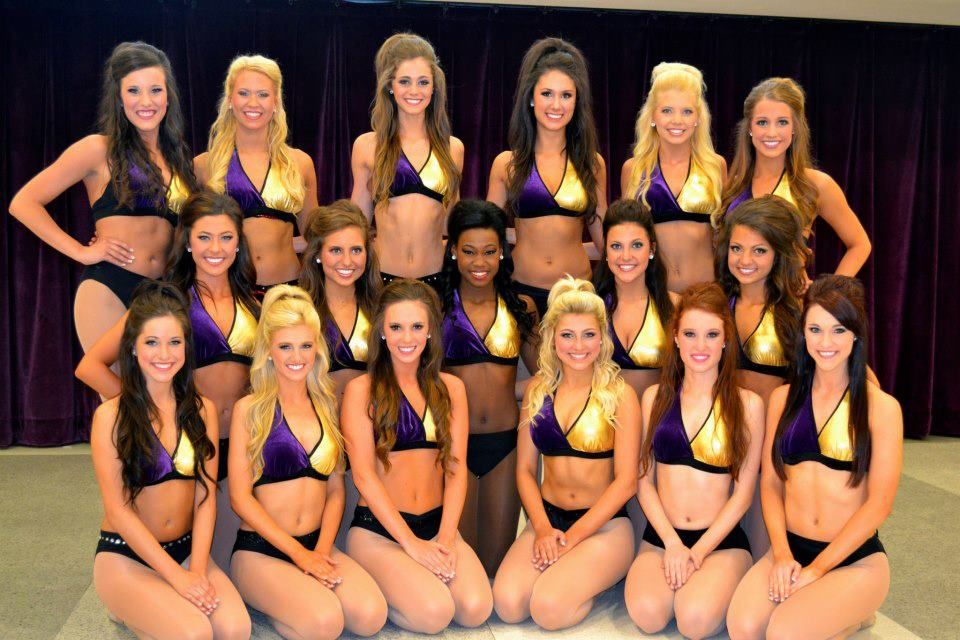
And by that, I don't mean the audition dates. Dig around to find out about any team skill requirement; specific techniques in dance forms that you will need to know, like splits or double pirouettes. Checking on other important details such as participation fees, weight limits, and what the day's event schedule looks can help you feel prepared and in control. Getting the lay of the land before the big day arrives will not only help you prepare better, but you'll feel calmer and focused as a result.
Find out if there are a 'pre-audition workshops' before the actual audition too and ensure you go to those!
Ask around to see what the audition process will be like, how many cuts they will have if there will be callbacks if it is an all-day event or will take a few hours. Be prepared accordingly and bring a change of clothes, water, snacks, and of course the right mental makeup.
5. Take Classes from a Professional StudioWhen you are preparing for being part of a top-notch dance team, your dance skills will be the most critical consideration. Hone them to a razor sharp edge by taking professional dance lessons ahead of time. A strong background in dance will also give you an advantage over other dancers who have little or no formal training.
Hone them to a razor sharp edge by taking professional dance lessons ahead of time. A strong background in dance will also give you an advantage over other dancers who have little or no formal training.
Before signing up to dance classes, research to identify what style of dance will best help you in your tryouts. Ballet helps with balance and poise while Jazz can help boost your precision and technique. A hip-hop class will help you take your style up a notch.
6. Improve Your TechniqueSo you have always danced and felt prepared to take on the toughest audition? Don't let it lead to complacency. Becoming a collegiate dancer means you still have room to improve as the expectations you must meet have been drastically raised. Practice your turns, practice your jumps, practice your leaps, and especially practice unique skills that could set you apart- such as wearing your hair and makeup and interview skills.
Sign up for classes that can give you the practice you need and help you perfect required skills. The coaches can share their own stories, and you can certainly benefit from the tips and advice from those who have been around.
The coaches can share their own stories, and you can certainly benefit from the tips and advice from those who have been around.
Supplementing your dance classes at a professional studio with a workout plan at least a few weeks before your tryout will up your endurance and flexibility significantly. A good workout plan should include a combination of cardiovascular exercises balanced with stretching or yoga.
If you do make the team, you will have to most likely participate in a training camp with the rest of the team, so it’s best to be prepared in advance. Doing a split requires daily stretching; you will also need a lot of strength and stamina to be a dance team member. Work on building muscles in your back and stomach, and condition yourself by raising your heart rate each day by exercising.
8. Be TeachableWhen auditioning for college programs, judges are looking for more than proper technique and knowledge of dance forms. Having a teachable personality means staying loose, staying engaged, laughing at your mistakes, and holding your head up high. And don't rest unless you get answers to your questions.
Having a teachable personality means staying loose, staying engaged, laughing at your mistakes, and holding your head up high. And don't rest unless you get answers to your questions.
Your determination will not go unnoticed. Auditors want to know you are not smug about your achievements till date and are looking for those who they want to hang out with for the next four years, people who are open to learning, growing, and improving!
9. Remember That Performance Scores PointsCollege Programs are looking for people who are good at two of the three triple threats (dancing, singing, and acting) but the golden ticket that will get your acceptance letter has to be your potential in the third realm. The judges are observing your willingness to go for it, and enjoying your performance the joy on your face, so, SMILE!
Personality is a big part of an art form like dancing, so make sure yours shines through; hold your head up at all times and keep a pleasant look on your face and show them how excited you are to be auditioning for a spot on the team.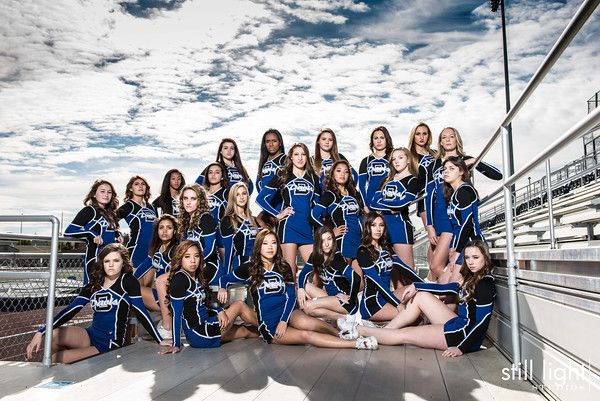 It is also essential that you speak well and are personable.
It is also essential that you speak well and are personable.
In the collegiate world, expect to appear on television and real close-ups. Thousands of fans see your shining face on the field or court, and thousands more will also be watching behind a television screen. With this being said, it is vital that you look your best at a collegiate tryout.
Most dance teams have dress code requirements for tryouts. If the team doesn't tell you what to wear for tryouts, wear black stretch pants and a bright tank top or even a fabulous leotard. Brings two pairs of shoes, as there may be two rounds, one focusing on jazz (carry jazz booties) and the other for hip hop (use non-marking dance sneakers)
Booty shorts and a crop top with nude fishnet leggings works excellent. Some bling on the top like diamante or sequins helps you shine, and of course, colors of the team you are trying to make will be a huge plus!
Keep Perspective
While your whole mission in high school and college may be to make that coveted position on the school, college, all-star or State dance team, going for a dance tryout is more than that..jpg?width=790&name=St%20Charles%201A%20Jazz%20(1).jpg) Auditions have an element of unpredictability, and there are as many stories of disappointed freshmen as there are of successful ones. Just know that the life lessons you will learn in the process of preparing for and giving a dance tryout are as precious as wearing the colors of the team.
Auditions have an element of unpredictability, and there are as many stories of disappointed freshmen as there are of successful ones. Just know that the life lessons you will learn in the process of preparing for and giving a dance tryout are as precious as wearing the colors of the team.
All the very best in making it to your Dream Team!
7 Tips for Acing Dance Team Tryouts
Gearing up for dance team tryouts? Whether you're trying out for a high school team, or one at the college or professional level, it can be an emotionally and physically demanding experience. But don't let your nerves get the best of you during the process! Whether this is your first tryout or your 20th, follow these tips so you can deliver your best performance when the big day finally gets here.
Tip #1: Get the details.
The more prepared you are walking into dance team tryouts, the more confident you'll feel. So do some digging so you can find out about any team skill requirements; for instance, certain techniques or dance moves you'll need to know, like splits or double pirouettes.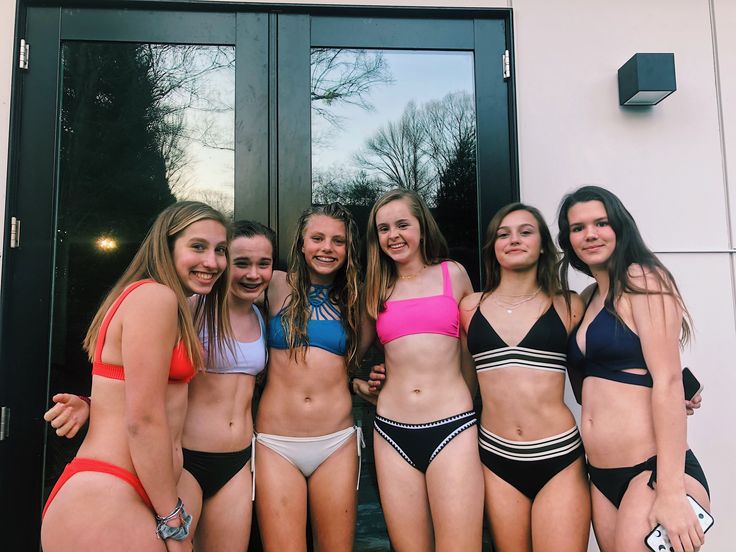 Also, find out about any other important details, such as fees, weight limits, and what the day's event schedule looks like so you can plan ahead. Getting the lay of the land before the big day arrives will not only help you prepare better, but you'll feel more calm and focused as a result.
Also, find out about any other important details, such as fees, weight limits, and what the day's event schedule looks like so you can plan ahead. Getting the lay of the land before the big day arrives will not only help you prepare better, but you'll feel more calm and focused as a result.
Tip #2: Take classes from a professional studio.
One of the best ways you can prepare for dance team tryouts -- and make sure your skills are absolutely spot-on -- is to take dance lessons ahead of time. In fact, getting professional instruction is your best bet for making it onto the dance team of your dreams. Plus, a strong background in dance will also give you an edge over other dancers trying out who have little or no formal training.
Do some research to identify what style of dance will best help you in your tryouts. For instance, ballet can help with balance, as well as poise. Jazz, on the other hand, can help you boost your precision and technique. If you're looking to take your style up a notch, then try a hip-hop class.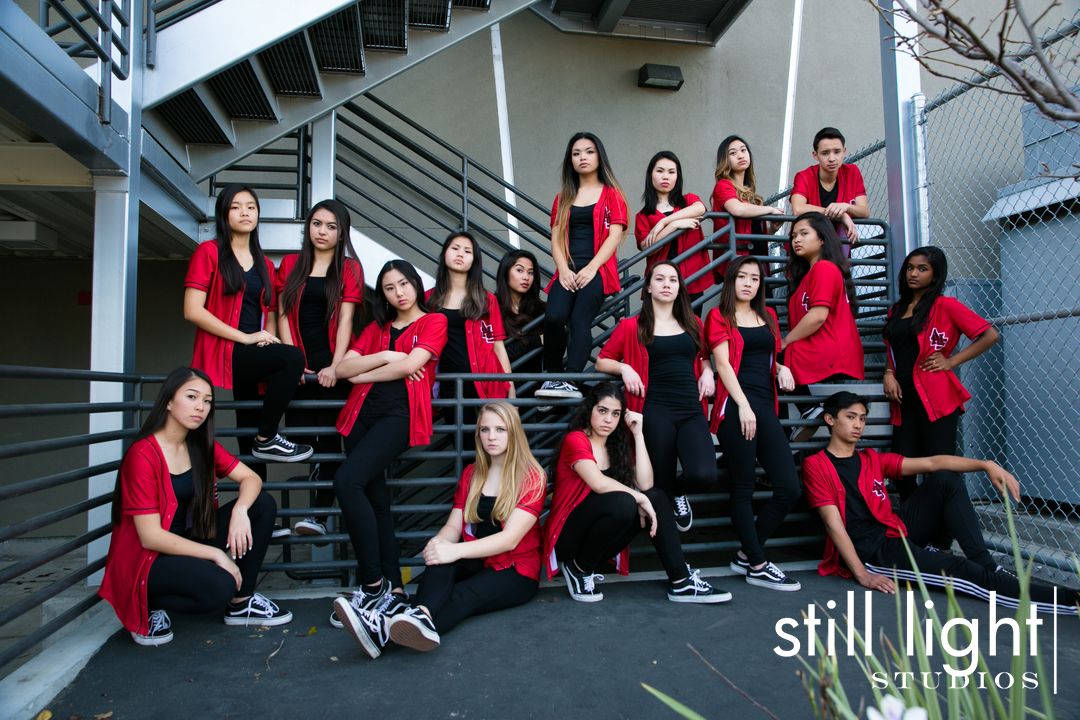
Not only can lessons from a dance studio give you the practice you need and help you perfect required skills, but the coaches can share their own stories, offering you plenty of tips and advice for what you need to do to ace your tryout.
Tip #3: Get in your best shape ever.
In addition to dance classes at a professional studio, start a workout plan at least a few weeks before your tryout. Skills are important, but so is endurance and flexibility. That's where a good workout plan -- which includes a combination of cardiovascular exercises balanced with stretching or yoga -- can help.
Tip #4: Take advantage of team clinics.
Some teams offer clinics before tryouts. This is a great way to prepare and learn the required choreography. It will also help you further develop your skills and find out exactly what judges want to see when you're performing. If you're not sure whether the dance team you're interested in offers clinics, contact the director.
Tip #5: Know the dress code.
When it comes to dance team tryouts, making the best impression possible is critically important. Even if you have all the right moves, if you're not dressed in the right way, then it can negatively impact the impression you leave behind. Judges will remember you for all the wrong reasons.
Many dance teams have a dress code for their tryouts. So follow it precisely if you want to get noticed in the best possible way by judges. If, however, there isn't a dress code, then wear clothes that are comfortable and show off your physique. For instance, try black dancewear bottoms and a colorful dancewear top. You're trying to be memorable so make sure you feel confident in whatever clothes you choose to wear.
In addition, pay special attention to your hair and makeup, including doing a hair style that's tied back. That way, you don't have to worry about your hair falling in your face, distracting you during tryouts. For your makeup, don't pile it on; simply apply enough to enhance your features. It's proven that the better you look, the better you'll feel.
It's proven that the better you look, the better you'll feel.
Tip #6: Keep healthy habits.
It's so important to eat a healthy diet and get enough sleep leading up to the big day. If you eat a lot of junk food and stay up late, it's not only going to impact your day-of performance, but also your ability to get the most out of practices and workouts. That's why it's vital to maintain a balanced diet of protein, vegetables, and whole wheat. The day of the tryout, also make sure to eat a breakfast that will give you the fuel you need to perform at your best, such as peanut butter on whole wheat bread.
Tip #7: Do your best.
Part of doing your best means showing up on time. Judges will want to make sure you can follow the rules and being prompt, or even showing up a few minutes early, is important.
Also, during your dance team tryout, try not to let your nerves show. Personality is a big factor when judging, which is why you want to showcase yours..jpg) So hold your head high, smile and put your best foot forward. You want to show the judges you're excited to be there and that you're eager to be a part of the team.
So hold your head high, smile and put your best foot forward. You want to show the judges you're excited to be there and that you're eager to be a part of the team.
If you do make a mistake, just roll with it. Keep smiling and don't stop moving. Judges expect some mistakes and nerves, especially at the beginning. But it's how you handle yourself afterward that will show how well you do under pressure -- and whether you're worthy of a spot on the team. Good luck!
Request a Just For Kix Catalog!
profitability, work with teachers, promotion, difficulties and mistakes
Irina Malchukova
opened a dance studio twice
Author profile
Eight years ago I opened a dance studio in a small metallurgical town where there was nothing like it at that time.
During its existence, the studio went through several relocations, twice seriously went into the red, but in the end it remained a successful business, and then I sold it. I’ll tell you how everything was, what worked for me and what didn’t work out.
Why I decided to open a dance studio
The story began in a standard way: since childhood, I dreamed of dancing and for a long time persuaded my parents to take me to a choreographic studio.
There were no holidays, vacations or birthdays in the studio. It was possible to miss a training session only in two cases, as the coaches joked: he fell ill or died. The rest of the reasons were not considered valid, and it was possible to fly out forever.
Later, I appreciated the strict discipline and exactingness of the teachers. Thanks to them, I can easily control myself, concentrate on any, even unpleasant, business, and bring everything to the end.
This helped a little in business: I could work 10-12 hours a day without days off and holidays.
After graduating from school, I thought that dancing is a hopeless field, so I need to get a different education and build a career. I studied to be an economist and during my studies I managed to work in a trading company, a women's correctional colony and a large network company.
But I was bored doing monotonous activities and being subordinate to someone, I wanted to embody my ideas. In 2009In the year I decided to take a part-time job as a dance coach, and since then a completely different life has begun. I started working in the then popular areas: strip plastic, stretching, go-go, I also taught regular dances to children and was a group program coach in fitness rooms.
I enjoyed teaching people and putting numbers, inspiring others to accomplish things, raising students, and working with them to achieve results. It's like a coach's job: he gives his whole soul and nurtures champions.
Almost as soon as I started working as a trainer, I wanted to open my own studio. I didn't like the set boundaries and the backward approach to business. In the dance schools where I worked, there were outdated areas that were out of fashion for a long time, such as aerobics. Classes were held without requirements for students and without results: we did not put numbers and did not participate in contests or competitions. There were no opportunities for growth for teachers or students.
/twerk/
How to start twerking, how much does it cost and why shake your booty at all
The business itself was not service oriented. Schools did not develop, did not innovate - they simply worked for decades according to the old scheme. Several times I came with fresh ideas, for example, to shoot a video clip, but all this was perceived by the management with hostility.
In 2012, I graduated from the institute and received a diploma in economics. I had a choice: to leave for another city, because there were no prospects in mine, or to go work in the dance field abroad, or stay here, but do my own project.
I dreamed of creating a project from scratch on my own: thinking about how to plan and conduct classes, presenting the design of the studio, tracking down the mistakes of others. All these thoughts were constantly spinning in my head, day after day I lived only with this idea, remembering what not to do or what can be improved.
After graduating from the institute, I myself learned about a new direction - half-dance, this is dancing with tricks on a pole. It seemed to me interesting and promising, there was nothing like it in our city. I decided that the idea would shoot and attract people due to its novelty. Three years after I started working as a trainer, I launched my own studio.
What is half-dance
Half-dance is close to strip plastic, but unlike it, the purpose of the dance is not to seduce, but to show acrobatic skills. The movements in strip dance are soft and smooth. And half-dance is the same gymnastics, only not on a beam or rings, but on a pylon. On it, dancers perform circus and power elements.
In my city, metallurgists were not even heard of such a direction, but in Russia and around the world in the 2010s, half-dance just became a trend. At that time, I already had a large client base from dance schools and fitness centers where I had worked before, many students asked when I would open my own gym.
| Pole dance combines elements of choreography, gymnastics, acrobatics | There is also a separate sports direction in the world - pylon sport, which belongs to air power athletics |
Before I opened my studio, I twice studied pole dance in Yekaterinburg - this was the school closest to me where this direction was taught. And there lived a friend with whom I could stay.
The first time I went was in January 2012, and then back in May, before the opening of my gym. I studied for a week every day for many hours, attended master classes. For the first time, the director of the studio gave me a discount on acquaintance, and the training itself cost only about 10,000 R. The second time I spent about 17,000 R: the cost of the training itself increased, and there were more additional expenses for food and travel. Both times I received certificates.
27,000 R
I spent on additional training in pole dance
There were no competitors in my city at that time. We had only seven dance studios: three taught street dances like hip-hop, breakdancing and locking, the rest were aimed at children, taught modern and classical choreography and ballroom dancing. In fitness clubs, they mainly taught go-go and oriental dances. I decided to take a risk and become the pioneer of a new direction in the city.
First Studio: 3m Ceilings and a Stolen Idea
In May 2012, I started looking for a space to launch the project just in time for the start of the school year. I discussed all the details like equipment, technical issues and the learning process with the directors of the studio in Yekaterinburg when I studied half-dance there.
The room had its own requirements:
- Ceiling height - at least 3 meters, so that poles - pylons can be installed.
- The ceiling plate must not be hollow, but must be at least 30 centimeters thick. The pylons must withstand a weight of up to 150 kg. If the ceiling is thin, the mount simply won't hold up.
- Rent — up to 15,000 R per month. In my experience, it would be difficult to cover the amount higher with the number of subscriptions, and if something happens, I could find that kind of money to cover a failed month.
/dogovor-arendy/
What should a business consider when signing a lease
Not all landlords agreed to damage the ceiling, the thickness of the ceiling was not always suitable for my needs.
The deal failed with the first hall. Due to the peculiarities of the ceiling, an additional structure had to be made there. The landlords agreed to do it themselves, and I would have paid for the work, but at first they doubled the price, then increased it even more, and then refused to cooperate at all.
A few months later, I found out that they wanted to steal my idea and open a similar studio.
Fortunately, their attempt failed: they could not find the appropriate teachers, because only I had such a certificate and knowledge in the city. But the problem with the hall remained: I was already promoting a group on Vkontakte and recording for the academic year. The students were actively recruiting, but I had nowhere to receive them.
I couldn't just make excuses by telling a story about unscrupulous landlords and kept looking everywhere I could: on websites, in local newspapers, driving around the city, looking for signs about rent.
As a result, the opening had to be delayed for two months: due to the specifics and restrictions on the rental price, the premises had to be looked for for almost six months. A former colleague helped: he learned from mutual friends that I was opening a studio, and his friend was just renting out a small hall.
We have agreed that part of the repair costs will go towards rent. I did a facelift in a few days and bought equipment.
I did the repairs on my own — for example, I painted the walls myself. If it was necessary to attach pylons and arrange heavy furniture, then she called for help from familiar men. They spread linoleum on the floor and nailed it in places.
Pylons are installed quite quickly if there are no problems with the ceiling and floors: you need to drill a hole, attach the pylon, level it, and that's it. Detailed installation instructions are always attached to the pylons. We set up the first pylon in 2-3 hours, the rest were faster.
An important part of the cost for a dance studio is mirrors. They were made in a local company in my city to order. I ordered one-piece large mirrors to the floor. Due to the large size, there were difficulties with transportation: a special vehicle with equipment for transportation was needed - plastic windows are usually carried in such vehicles.
They could not be moved or installed by one person, and they could hardly fit into the aisle. Plus, there were difficulties with fixing: if the wall was not perfectly even, then any slightest deviation could be seen in the mirror - at the joints, in reflections.
But the mirrors themselves were excellent, and I then transported them to new studios, breaking the part along the way and ordering new ones. As a result, my friends came up with the idea of custom-made huge plastic frames, like for plastic windows, where we inserted mirrors. So they were easier to transport and install.
For a pylon, a hole is drilled in the ceiling slab and fixed with screws. If the ceiling is not strong enough, the pole may come off during the trick and cause serious injury. Source: Pole4you This is what the studio looked like after the repair - huge mirrors were made to order at the local production At the same time I registered an LLC, I was the sole founder. I chose LLC because I planned to open branches in other cities - it seemed to me that it would be easier to do this than with an individual entrepreneur.
By the way, it would be better if I opened an IP. The LLC was not useful to me later, I had to close it, and this is more difficult than an individual entrepreneur. In the second hall, I had to negotiate with the landlord so that he would give me a legal address. He reluctantly agreed, and I had to pay for it. The LLC also needs to submit a large number of reports, but I did not have the necessary accounting knowledge. Until I hired an outsourced accountant, there were delays in submitting reports and fines.
/ooo-na-divane/
How to register an LLC from home
I opened the studio at the beginning of November. I was ashamed in front of the students, but they waited and almost all of them came.
To open a studio, I took out a loan, so after the opening, most of the proceeds went to payments to the bank - 20,000 R per month. For the entire time the business has been running, I have taken several loans, on average, 30,000-50,000 R for a period of 3 to 5 years. The total amount of all loans was 200,000 R.
Expenses for opening a studio in 2012 — 200,000 R
| Equipment: mirrors, pylons, fixtures | 95 000 R |
| Cosmetic repairs: wall painting, flooring | 53 000 R |
| Training and advanced training before the opening of the studio | 27 000 R |
| Bathroom renovation | 14 000 R |
| Music center, locker room furniture, hangers at the entrance and other small items | 11 000 R |
Equipment: mirrors, pylons, mounts
95 000 R
Cosmetic repair: wall painting, floor covering
53 000 R
Training and advanced training before opening the studio
9000 000 RSanuzla repair
14,000 R
Music center, locker room furniture, hangers at the entrance and other trifles
11,000 R
How much did I earn
The first studio was small — there were only three pylons, and I could not teach more than an hour six or seven people.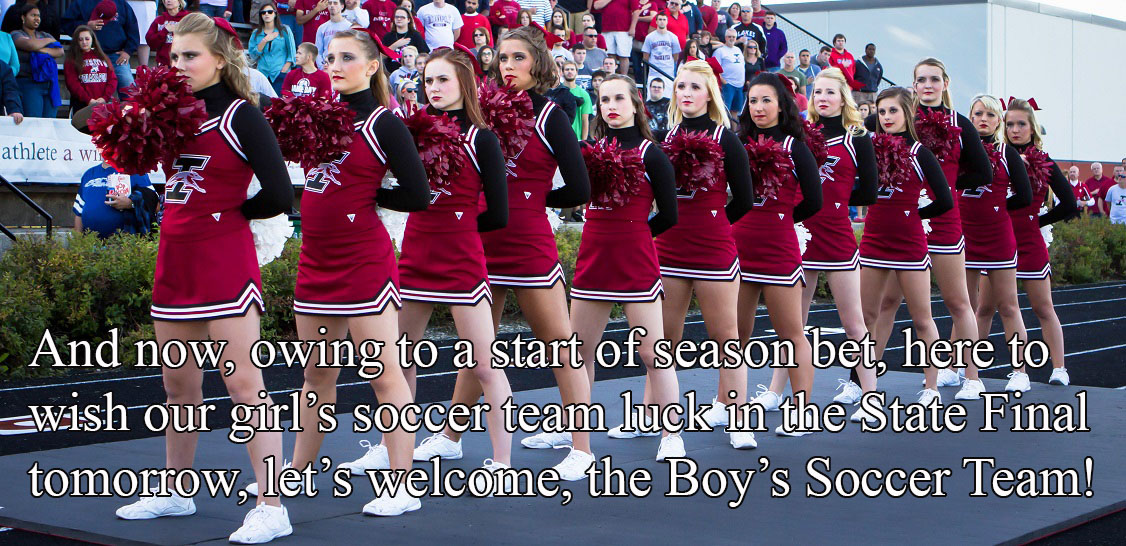 This allowed the studio to earn an income of about 65,000 R per month.
This allowed the studio to earn an income of about 65,000 R per month.
There were two main sources of income: group and personal lessons.
Group lessons were by subscription only. The most popular, for eight classes a month in the evening, cost 1800 R. Evening is considered the most profitable time, because more people come. There was a small discount for the daytime.
Personal lessons were by subscription and one-time. A subscription for eight classes cost 3000 R, a one-time visit - 500 R. At first, the income from personal classes was small: with group classes, I did not have time to take more students. When more teachers appeared, I could only go to personal classes, and the revenue from them reached 30,000 R per month.
A regular waste was the purchase of alcohol: it is rubbed on the surface of the pole to remove dirt and sweat and improve adhesion to the skin. Alcohol had to be bought in canisters from doctors I knew - we needed a concentration of at least 70%, and this is not for sale in the public domain. It took 2000 R per month.
It took 2000 R per month.
The largest turnover was from the spring of 2013 to the spring of 2014: 140,000-170,000 rubles. And the largest net profit was about 60,000 rubles.
Revenue for December 2012
| Subscription for 8 lessons | 27 000 R |
| Subscription for 12 lessons | 12 500 R |
| Subscription for 16 lessons | 12 000 R |
| Day group | 8000 R |
| Personal lessons | 5000 R |
| Total | 64 500 Р |
Subscription for 8 lessons
27 000 R
Subscription for 12 classes
12 500 R
Subscription for 16 lessons
12 000 R
Day group
8000 8000 °
Personal classes
9000 5000 5000 °64 500 500 500 500 500 500 500 500 500 500 500 500 500 500 500 500 500 500 500 500 500 500 500 500 500 500 500 500 500 500 500 P
Studio expansion: moved four times in five years
The studio lasted only six months in the first building: the landlord changed plans and we had to move out.
I already wanted to move out myself, because the room was small and I could not teach more than seven people in an hour. To support myself, support the studio and repay the loan, I needed to sell 20-30 subscriptions a month. If I bought less, I no longer had enough money for all expenses. It was necessary to expand and increase income, and for this, another room was needed. In just five years, we moved four times - each time to a new area of the city.
In March 2013, I took away the mats and the music center and moved to another room - almost three times bigger than the old one. I had to take out a loan again, because the old pylons did not fit in height. For 150,000 R I bought five new pylons and changed the flooring. The move cost 300,000 R, including rent for two months.
300,000 R
I spent on moving
There were no problems with buying poles: even then in Russia there were several specialized companies that produced professional poles for dance studios. The best and most famous is located in St. Petersburg - Pole4You. You place an order on the website, choose a convenient delivery method - I had "Business Lines" - and they send it. Two weeks later I received the pylons.
The best and most famous is located in St. Petersburg - Pole4You. You place an order on the website, choose a convenient delivery method - I had "Business Lines" - and they send it. Two weeks later I received the pylons.
| Lesson in the second hall after renovation. The floor had to be re-laid - it should be soft high-quality linoleum so that the students do not hit their knees and do not get hurt when they fall | This is the third hall we have moved to. There I seriously invested in repairs, laid carpet on the floor, repaired the locker room and shower for students and teachers |
 In the third hall, they made a bright panel on the wall. I was the first in the city to start teaching half-dance, so this particular dance is depicted on the panel
In the third hall, they made a bright panel on the wall. I was the first in the city to start teaching half-dance, so this particular dance is depicted on the panel The rent of the premises was three times higher than the previous one, the communal apartment was included in the price. In addition, you had to pay for security. All together it cost me 50,000 rubles.
There were no cheap premises, so the choice was either to continue or give up the dream. I decided to take a risk, and the risk was justified: the business grew rapidly. After the move, we already taught 10-12 students per hour and earned an average of 150,000 R per month.
How I built my work with teachers
I recruited teachers from former students: I chose those who had the potential for this or that direction, loved classes and knew how to communicate with the team. There were three main teachers, I took one or two more for additional directions like go-go.
She tried to make the work of teachers a pleasure: she gave salaries higher than the market, bonuses, paid for their education and advanced training, gave part-time jobs. The average salary in the city for teachers at that time was 2500-4000 R per month for 2-3 lessons per week. I paid 7000-8500 R, if I gave out a bonus, then it came out about 10,000-11,000 R. I gave out bonuses to those who attracted new students to their classes and, most importantly, kept new students. Or those who came up with something interesting like New Year's contests.
The average salary in the city for teachers at that time was 2500-4000 R per month for 2-3 lessons per week. I paid 7000-8500 R, if I gave out a bonus, then it came out about 10,000-11,000 R. I gave out bonuses to those who attracted new students to their classes and, most importantly, kept new students. Or those who came up with something interesting like New Year's contests.
Teachers went to Yekaterinburg to improve their qualifications. It cost me 500-3000 R per person. I myself taught until the fall of 2013, and then I decided to leave only to manage the studio, since classes took time and effort.
Promotion: mostly word of mouth worked
The very first I had a group in VKontakte — I started to recruit the first students even before the opening of the studio from former students. When I started to develop the group, I asked my friends to join it and make reposts, every day I posted posts, photos and videos to attract people. About a year later, the group had 1000 subscribers, and since 2013 it began to develop actively.
The popularity of the project was also influenced by the uniqueness of the project: half-dance in the city was a new exotic direction, people from the media sphere became interested in this.
/marketing-ads/
Basics of marketing for business: advertising
My main clients were girls 25-35 years old with an average income and a little higher.
Here's what I used to promote.
Regularly updated accounts on Vkontakte and Instagram. I photographed a large, beautiful, spacious hall with high pylons, people reacted and signed up for classes. We wrote about the studio every day, posted posts, asked all our acquaintances and friends to tell about us.
Involved in the promotion of the community of teachers. In the new premises, I already taught with three coaches, whom I found among former students. They posted recruitment announcements for groups on their social networks, made photo sets and videos for Instagram. Friends of acquaintances came - it turned out such a word of mouth.
Friends of acquaintances came - it turned out such a word of mouth.
Made a website for the studio. It cost about 13,000 R. I made a beautiful clip on the main page, added photos, information about teachers and a class schedule. After the site appeared, calls began to arrive twice as many.
13,000 R
I spent on the site
I invited photographers and cameramen to work on a barter basis. The direction was new in the city, so they were interested in working with us free of charge. Sometimes they did provocative reports like "Half-dance: striptease or art?", but in any case, publications brought us fame. There were about 15 permanent photographers.
Photos from the performances of studio teachers at concerts and events. These are dances on canvases. Photo: Dmitry Kaiser| An example of a photo shoot that we came up with with a photographer. Photo: Dmitry Kaiser | For them, it was new and unique content that no one else had done in the city. Photo: Dmitry Kaiser Photo: Dmitry Kaiser |
Placed ads about the studio. I have published on local sites, 2GIS, Flampe and Avito. She advertised several times through Yandex Direct. Local sites and 2GIS did not give any results, but promotion through Yandex Direct and Google Ads worked.
I was engaged in promotion, at the very beginning I asked a friend to figure it out and help set up advertising. Usually, new campaigns were launched before the season - at the end of summer to attract students for the new school year, and at the end of winter to attract people for the spring. The advertisement lasted 1-2 weeks, the average budget per campaign was 7000-15000 rubles. We did not have to negotiate with them: they themselves found out that a new dance style was being taught in the city, and they wanted to talk about it.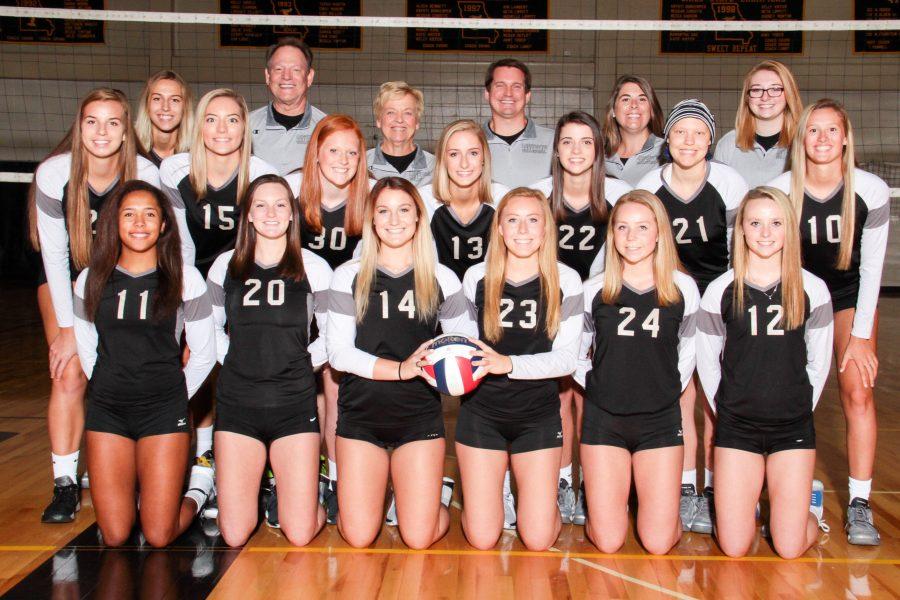
Development of the studio: new directions in the city
Everything was spinning at breakneck speed. Soon I brought new dance styles to the city: aerial gymnastics on canvases and acrobatics on the ring. This trend had already begun in Yekaterinburg, and I knew that it would soon come to our city. It was necessary to have time to be the first.
At first, all this was not in demand, because it was hard and difficult for the students. It is very painful to practice on the ring and canvases: after the lesson there are huge bruises from hoops and burns from the fabric.
Imagine: you are hanging in the air and you are being held by a rag digging into your body.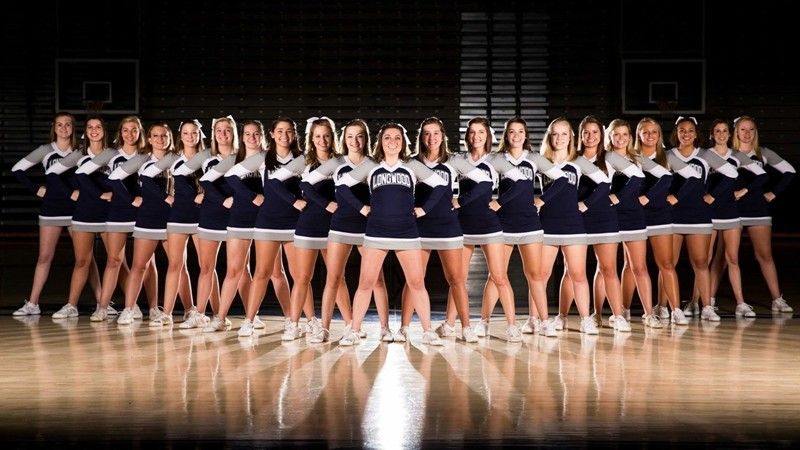
But then the direction unfolded: beautiful photosets and clips with dances on canvas appeared in all social networks, competitions began to be held in cities, dance studios made enticing advertisements.
I was the first to develop this direction in the city, so the students immediately came to me. Once I organized a competition to draw attention to dancing on canvases: for the best photo on canvases, I gave a subscription to eight classes in the studio.
From the outside, these dances seem dangerous, but there have never been any accidents in my classes. Classes are necessarily held with special mats that soften the blows if someone suddenly falls. Teachers are trained and know how to avoid injuries. Before the start of classes, my clients got acquainted with the instructions for safety rules and signed it. Nevertheless, adults understood their responsibility, no one took risks once again.
For classes on canvases and rings, you need to buy additional anchors - these are such fixtures in the ceiling - and soft mats on the floor for safety In general, there are few incidents in this area.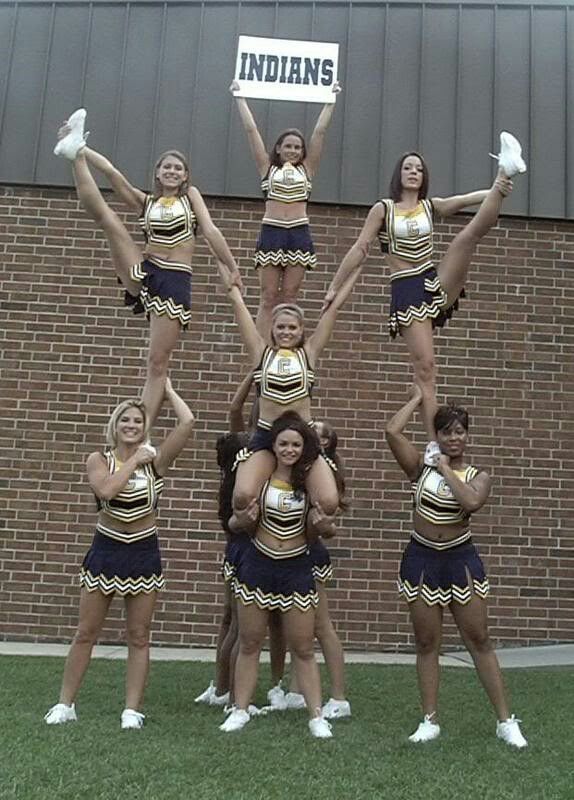 I heard only about one case: in Yekaterinburg, a girl flew off a pylon and broke her arm. But it was a pylon of a different design - a portable one that stands on the podium. It is less stable than a pylon bolted to the floor and ceiling in a studio.
I heard only about one case: in Yekaterinburg, a girl flew off a pylon and broke her arm. But it was a pylon of a different design - a portable one that stands on the podium. It is less stable than a pylon bolted to the floor and ceiling in a studio.
I first looked for teachers at the local circus school, we have a pretty strong one. But we worked with them for a couple of months and did not agree, so I sent several students to study in Yekaterinburg at my own expense - so that they could conduct classes.
44,000 R
I spent on the introduction of a new direction
The introduction of new directions cost 44,000 R: 38,000 R was spent on canvases, anchors and rings, another 6,000 R were spent on teaching teachers.
Children's dance school and missed grant
My students and parents of former students regularly asked to open dance classes for children: variety dances, stretching, modern choreography.
This would help expand the business and reach a different part of the audience.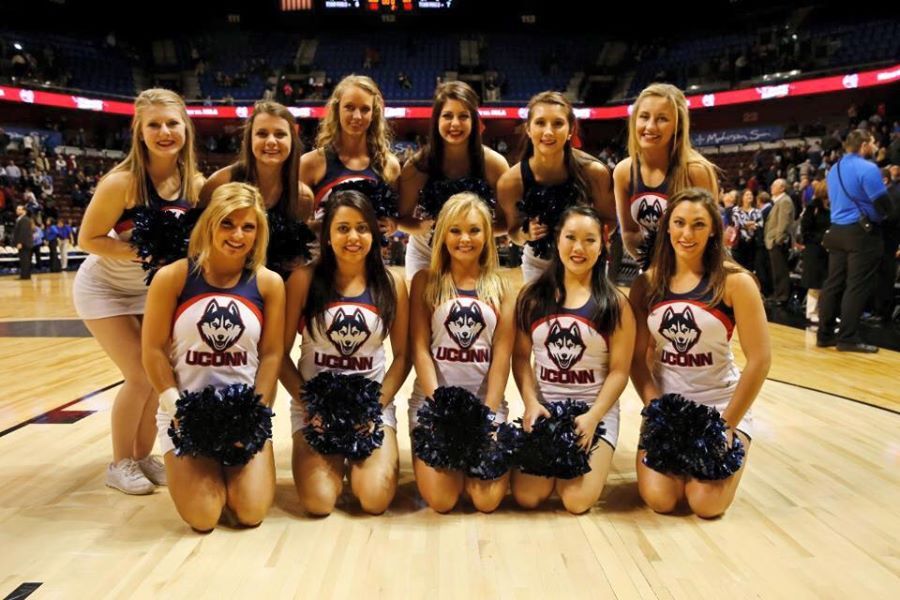 I knew for sure that the project would be successful: I had already worked as a choreographer with children aged 6-7, I had a reputation and potential clients.
I knew for sure that the project would be successful: I had already worked as a choreographer with children aged 6-7, I had a reputation and potential clients.
There was no free money to create a children's school, so I decided to look for a grant and found a suitable one - the competition of the Entrepreneurship Fund. To participate in it, one had to take courses and defend a business plan.
I did not learn anything new during the courses, since I already had an economic education. The next step was to write a business plan and submit an application. I asked for money not just for a children's school, but for business development.
I collected a package of documents: statutory documents, certificates of no debts to government agencies, a certificate of completion of courses, several questionnaires from the foundation itself, a business plan and checks confirming the costs of the project - 15% of the requested amount.
300,000 R
I got to the children's dance school
As a result, I won the competition and received 300,000 R.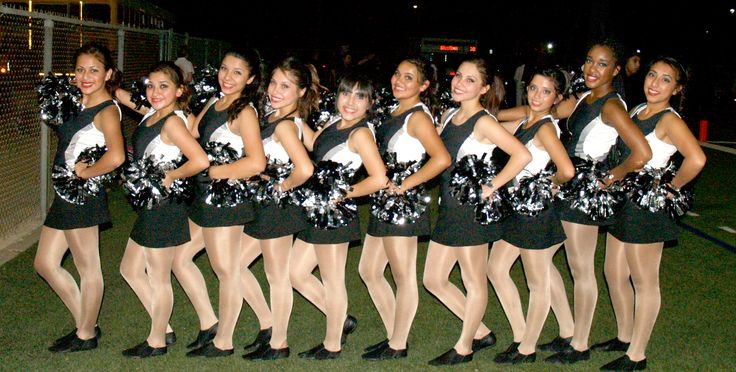
Everything went well, but again there were difficulties with the premises. I needed a hall with an area of 50 m², and these cost 50,000-100,000 R, and not in the center, but on the outskirts of the city. I couldn’t take on such obligations and pay more than 100,000 R for the premises of an adult and children’s studio: I had loans, and if something went wrong, no one would help me.
I tried to search for premises through state auctions and the city administration, I turned to the mayor for help. She offered to do free classes for children from orphanages or large families. But no one came towards me. We have a small city, culture and education are not particularly developed here.
There are factory workers in my city who prefer to drink and watch TV after work.
It was not accepted to get involved in something or have a hobby, so it is difficult to develop in a creative environment.
As a result, the school could not be opened. I spent a grant on an existing studio, and the foundation accepted it, because I originally asked for money to expand and develop the business. So the grant was well spent.
I spent a grant on an existing studio, and the foundation accepted it, because I originally asked for money to expand and develop the business. So the grant was well spent.
Despite the history with the grant, 2014 was a successful year: for the first time we held the first major dance event in the city — a pole dance competition. At the same time, it became possible to open branches in other cities: I found two halls and a representative, and I could launch three schools at once. But she was afraid of responsibility and put it off for the future.
/pozhaluite-grant/
How I got a grant for 100,000 R
I was afraid to carry such a large financial burden on my own, especially the simultaneous payments for four rents. I also wouldn’t have had enough time to manage all the studios myself, and there was no one to delegate.
If I created a network of dance studios, it would raise the status of the project, bring in additional income and allow the sale of the franchise to start. In the future, I did not have such opportunities.
In the future, I did not have such opportunities.
Went into the red and started again from scratch
In the winter of 2014, things went badly. At first I thought that it was just the off-season, winter and summer in this area are disastrous months. I had a small airbag with which I closed the holes. But in the spring it ended, but the situation did not get better, and the business went into the red.
Just then, the financial crisis happened, and it hit my city significantly: salaries dropped a lot, people began to save money - and first of all on hobbies. The city has a poor population, business is not doing very well, and financial shocks have a strong impact.
It seems to me that my business went into the red mainly due to two reasons:
- Some of the teachers turned out to be unscrupulous - they conducted additional classes in the studio past the cash desk. Or they were trained at my expense, and then left and poached students.
 I noticed this just in the fall of 2013 and in the winter of 2014, I was losing 20,000-35,000 rubles a month because of this.
I noticed this just in the fall of 2013 and in the winter of 2014, I was losing 20,000-35,000 rubles a month because of this. - Clients asked to extend their subscriptions in advance, but never brought money. In the winter of 2014, there were a lot of such cases - about 9— 12 people per month.
As a result, the studio's income fell from 110,000 to 60,000 rubles. I was forced to fire unscrupulous teachers and could no longer pay rent.
I had to move from a good place to nowhere, and the studio stopped working for almost a year - until February 2015.
Despite the closure, I believed in my project and had no idea what else to do. At that moment, the studio seemed to be the work of my whole life. In January 2015, I saw an advertisement for the delivery of a building with four-meter ceilings and two large halls.
By that time, competitors had already begun to appear in the city, who also taught half-dance. Half of my students and all the staff went to them - this time no one expressed loyalty and did not wait for me to solve problems. But the description of the new premises hooked me, and I decided to open again. She recruited teachers from her former students, and also looked for clients through social networks.
But the description of the new premises hooked me, and I decided to open again. She recruited teachers from her former students, and also looked for clients through social networks.
The repair of the hall took several months, so the studio opened only at the end of March. With difficulty, but I brought the business to its previous level, launched joint courses with teachers from other cities. I spent 285,000 R on the opening - these are the costs of repairs and rent for three months. I borrowed part of the amount from a friend, I earned part myself - at night I wrote diplomas in economics for students.
285,000 R
I spent on opening a new studio
How I decided to sell the studio two months. I managed to pay off debts for repairs and reach a stable profit.
In 2016, a lot has changed in my life. I met my future husband, we began to live together, and then we decided to move to another city. The business was irrelevant for me, and I put the studio up for sale.
It was planned that it would be bought by one of the old students who have been in the studio since its foundation. And so it happened. We negotiated with one of the students for almost a month. By that time, I had already closed my LLC and was about to move. Therefore, I sold the studio to her as an individual with the transfer of all rights, property and equipment for a symbolic 100,000 R - this is how much the equipment of the hall cost, taking into account wear and tear.
After the sale, I introduced the new owner of the studio to the staff and students, completed all personal affairs and never returned to this topic.
Expenses for December 2016
| Salary | 25 000 R |
| Premises for rent | 14 000 R |
| Drinking water and disposable cups | 2000 R |
| Alcohol | 2000 R |
| Utility payments | 1500 R |
| Total | 42 500 Р |
Salary
25 000 R
Renage Р
What mistakes affected the development of the business
Despite the successful start of 2014, I made mistakes that slowed down the development of the business.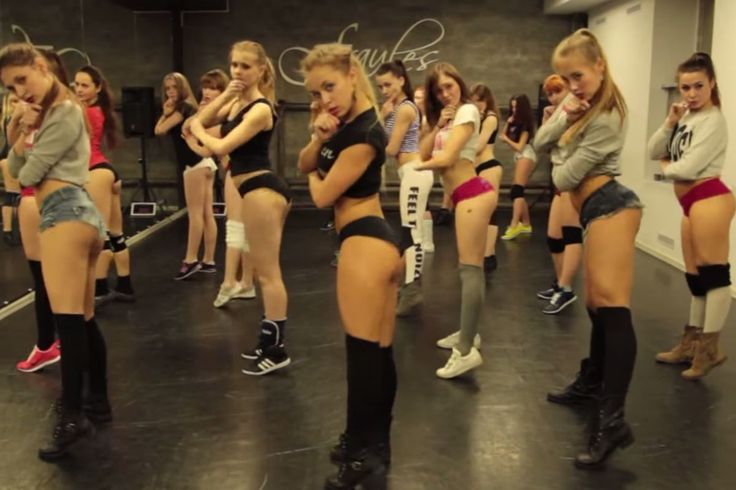
Did not conclude contracts with teachers, because I relied on their integrity and honesty. As a result, they went through training that I paid for, then went to competitors and took students away. To prevent this from happening, I needed to legally fix the training and confidentiality conditions. For example, to prescribe in the contract that the teacher is obliged to work in the studio for a certain period after completing the training or pay its cost, otherwise - a fine.
Gave the keys to the studio to all teachers. I didn't follow what the teachers were doing in the studio outside of class, and someone began to conduct classes past the cash register. Usually, an administrator works in studios, and only he has the keys: he opens and closes the studio, marks clients, and monitors subscriptions.
Made the salary too high in the city. I could save about 15,000 R per month on teachers' salaries and spend this amount more appropriately - on advertising or attracting additional teachers during the daytime and weekends.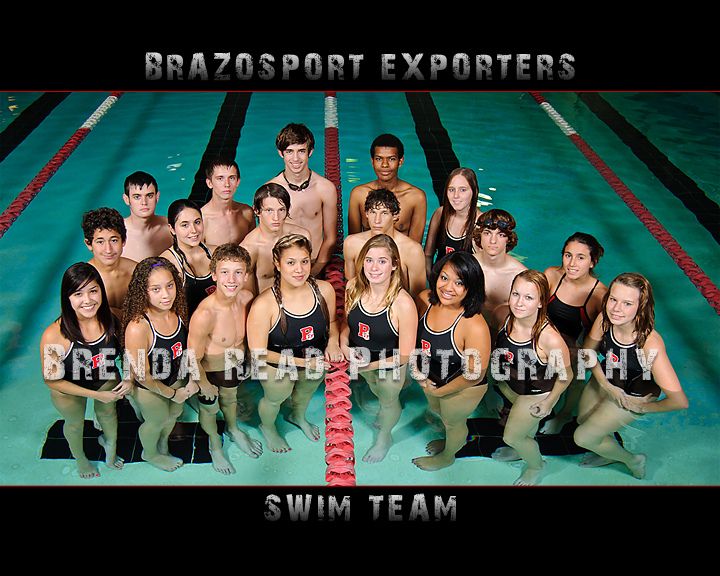
Didn't introduce strict visiting rules and didn't set up an accounting system. I went forward when the students asked to renew the subscription on credit or pay in installments. Because of this, I lost some of the money: clients went to classes, but never brought money for them, and I could forget who did not pay. If we had a CRM or other customer accounting system, these problems could have been avoided.
Irrationally used the premises. Instead of opening a second hall and teaching other dance styles, I made a dressing room and an office for employees in its place. In addition, it was possible to sublease the premises in the morning and afternoon, when there were no classes. I was offered this, but I refused. The studio could have a large sum from the evening for the sale of subscriptions, so you would have to keep track of those who rent the hall for sublease - either hire an administrator or do everything yourself. There was no worker for a nominal fee, and I didn’t have enough time.
Did not use all advertising tools . It was possible to attract well-known personalities in the city for cooperation, place booklets and business cards in popular places, launch targeted advertising and more actively maintain a page on Instagram. When I reopened the studio, I no longer invited the press and did not arrange master classes, and as a result, they began to forget about the school, especially since three competitors appeared.
Made hasty decisions. The third move was unsuccessful: the studio was in an area that was difficult to reach by public transport, too much money was spent on repairs, and it was difficult to get along with the landlords. For example, they promised to install batteries for three months and started working only when I threatened to leave. All agreements with landlords had to be fixed in writing in the contract, and not limited to verbal promises.
Invested in an ad that didn't work. I spent 27,000 R on advertising on a local news site - not a single new client, not even a single call. About 4,000 R was spent on business cards. It was not possible to put them in popular places, because the owners asked for it from 5,000 R per month. And in the places where I put business cards - near familiar coffee shops and beauty salons - there was too little traffic, so this did not bring any effect.
I spent 27,000 R on advertising on a local news site - not a single new client, not even a single call. About 4,000 R was spent on business cards. It was not possible to put them in popular places, because the owners asked for it from 5,000 R per month. And in the places where I put business cards - near familiar coffee shops and beauty salons - there was too little traffic, so this did not bring any effect.
I spent another 25,000 Rs on a sign for the entrance to the studio and a banner for the competition. Both were useful only once: the sign could not be taken away when moving, and although it attracted attention, it was possible to save money on it.
How to attract new dance studio clients? — Personal experience on vc.ru
1989 views
A successful dance studio is not only a beautiful name, logo, spacious premises. It is not enough to recruit competent and experienced coaches or rent spacious gyms with high-quality coverage. The main components of attracting customers are: clear positioning, high-level trainers who love their work, an attractive discount system and successful marketing.
How to achieve a balance between these components, create a unique and multi-directional brand of a studio or dance school and not forget about the loyalty system, comfort for customers and employees? For answers to questions, we turned to experts in their field, owners of successful dance schools and studios in different cities of Russia. In the material we will present you basic principles and secrets of attracting new clients to the dance studio.
We try to bring together professionals and amateurs, children and students, youth and adults in the studios. But we perfectly understand that each of them comes to dancing for something of their own. Basically, this is not a desire to achieve outstanding sports success, but a desire to get acquainted with the world of movements, find friends, get the opportunity to spend time comfortably and profitably. Therefore, we have a very strong, so-called social base. Among the directions, we are open to all classical and modern types: salsa, bachata, solo hip-hop, jazz funk, various types of plastics, acrobatics and much more.
With such a variety, we try to reveal each type of dance from all sides.
Anna, manager of Dance Studio 25.5
High season dancing
When to open the studio, start a new set? Which hall is better to rent for dancing, in which part of the city to choose a room? And, most importantly, what is a good indicator of attracting new customers? These are just the basic tasks for starting a successful dance school.
Some mistakenly think that people go to dances when they have free time - on vacation or on vacation. School managers and owners dispelled this myth .
Unconditionally, the high season starts in September. Moreover, we see a huge influx not only in children's groups, but also in all areas. Until December, people actively go to classes, and then two months of calm.
Angelica, representative of the Modern Dance School.
Only in February, at the end of January, the revival begins again, you can start recruiting new groups and activate advertising campaigns. Until about the end of May, clients actively attend classes and a lot of applications are received.
Until about the end of May, clients actively attend classes and a lot of applications are received.
In the summer there is an opportunity to develop new programs, send coaches to improve their skills or competitions, make repairs or other updates to the studio.
If we talk about the premises, it is best to start with two or three halls of different sizes. There will always be those who want to study individually, some unpopular areas, even during the season, do not recruit many students, so the hall of 30-40 square meters is perfect for these tasks.
But for such areas as salsa, bachata or other popular ones, halls of about 60-80 square meters are needed.
opinion of interviewed experts.
Who is new
The most exciting question for any studio owner is how many new clients can be attracted per month? There is no single answer.
It all depends on the studio and its location.
If the school is located in the center, then we meet more than 50 new dancers, sometimes the figure exceeds a hundred. But in the sleeping areas, the figures are slightly less.
Anna, Dance Studio 25.5.
Her colleagues in the dance workshop also noticed that strongly depends on the seasonality and direction of the studio.
There is another approach to finding and retaining customers.
It is extremely important for us to create not just a dance group, but a family of friends and like-minded people. On certain dates, we open a set for a new direction, collect a group and the influx of new customers stops. The backbone of the team has been preserved for years. The guys travel together for performances, events, many begin to communicate more closely. It is so comfortable to work not only for the students, but also for us!
Marina, representative of S-TANCIA studio.
The age of also strongly influences the average number of new customers.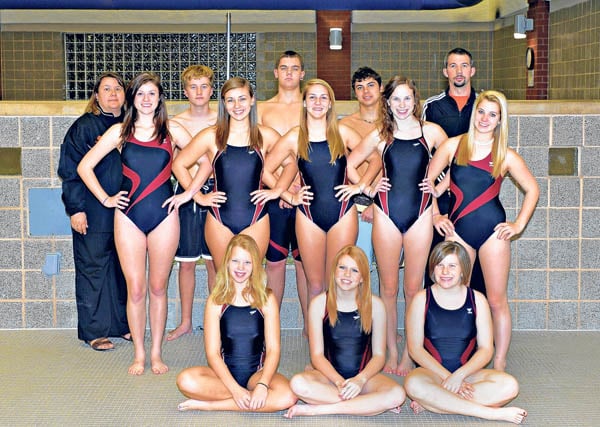 If the studio is aimed at students and office workers, then the number will be slightly higher. The school should be located in the center, close to offices and universities.
If the studio is aimed at students and office workers, then the number will be slightly higher. The school should be located in the center, close to offices and universities.
But in the sleeping areas go mostly couples and children. Here the directions, and the coach, and the occupancy will be different. In the afternoon the smallest children from two years old and the elderly go, in the evening - couples and older children.
The success formula is simple - the more destinations your trainers can cover - the more potential clients will come in the new month. It can be young people, and middle-aged people, and very little ones, already from 2-3 years old you can start dancing classes.
It seems that the most important information is over - no! Next, we will analyze with experts the main secrets and principles of search of these very 10, 20 or even 50 lucky ones, for whom the school and trainers will become guides to the world of dance art.
Business card of studio
And here the fun begins, you have several spacious halls with high-quality coverage and a good studio location, excellent trainers with a high level of communication and a desire to teach. But what to do next?
Dance industry experts have no doubt that everyone should have clear positioning , understanding of one's place and meaning of in the world of dance.
There are several options here. Versatility, where there are dozens of directions and programs: salsa, hip-hop, bachata, tango, solo numbers, children's groups and even individual lessons for staging a wedding or congratulatory dance.
We try to cover everything from children's programs to passionate Argentinean tango to the latest dance styles.
Anna, Dance Studio 25.5.
But even in this case, each studio retains its flavor. Someone is famous throughout the city for salsa and bachata trainers, others for their classes with the elderly, and still others attract a strong children's direction with the opportunity to participate in events and events of the city.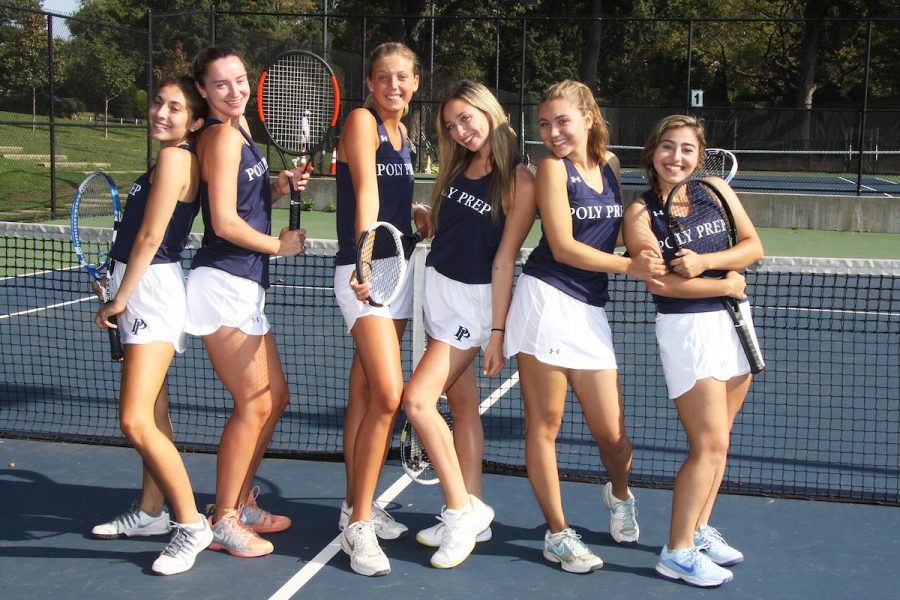
We are open to everyone: amateurs and professionals. It doesn't matter gender, height, weight, or age.
Anzhelika, Modern dance school "Dance Formation"
The second way long-term work with a painstakingly assembled team under certain programs .
We not only recruit a group for directions and trainers, but also create a program for clients' requests.
one of the directors of dance schools
The main advantage of this way in lack of seasonality . After recruiting a group, it exists for several seasons.
Whatever path you choose - for the success of the studio you need a logo, website and social networks. A studio without social networks in the modern world is like a person without a name and a phone. It can exist, but it is difficult to communicate, communicate and develop.
Banners and leaflets against target and direct
As they say, all means are good in war. If you want to succeed, act on all marketing fronts and advertising channels. Thinking about which platform to choose - Vkontakte, Instagram * or the recently fashionable Telegram channel, is better to try all . Yes, this approach takes more time, but return is many times greater than . The specialists of dance studios were convinced of this from their own experience.
If you want to succeed, act on all marketing fronts and advertising channels. Thinking about which platform to choose - Vkontakte, Instagram * or the recently fashionable Telegram channel, is better to try all . Yes, this approach takes more time, but return is many times greater than . The specialists of dance studios were convinced of this from their own experience.
It is important to embrace the immensity. We are everywhere: Vkontakte and Instagram *, Telegram, Yandex Zen, all maps, we maintain our website and YouTube channel. Do not forget about outdoor advertising, which by the way gives good results.
Anna, manager of Dance Studio 25.5.
Flyers, banners, signs, billboards, like books and newspapers will exist forever . They give a good result immediately after the opening of the studio and already at the stage of a large influx of customers.
We actively use banners, flyers.
And clients often come to us with these leaflets. The bearer receives a gift or a discount on the subscription, and we understand that the channel is working.
Oksana, representative of the Virazh dance studio.
But not all studios resort to outdoor advertising.
Very rarely we order banners or leaflets. The most effective interaction is eye contact. The specificity of the dance involves the nature of the video format. This is great for social networks. That is why the staff of the studio must have a professional videographer and editor.
Angelina, Dance Academy "Space".
And so it will do or a big team
Question of the big state is difficult. Especially when it comes to targetologists, operators and smm-specialists, and the studio has recently started working. After all, most of the functions can be taken over by other employees.
Social networks are often managed by studio administrators.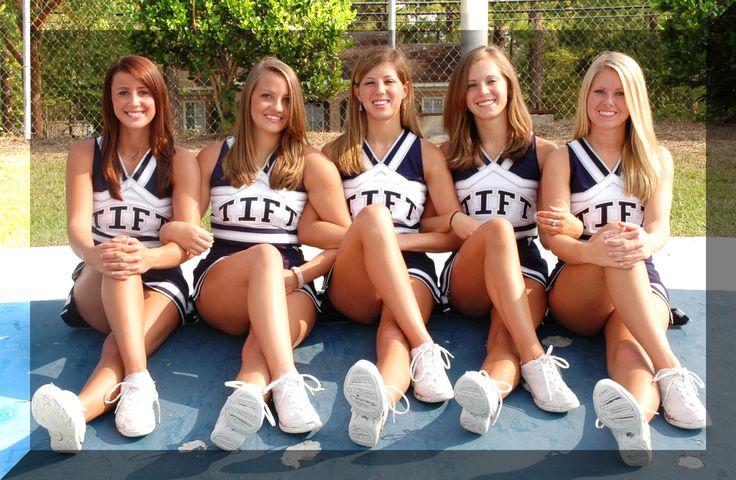 It is easiest for them to collect content, shoot relevant videos, photos and promptly notify the audience about changes in the schedule and class plan.
It is easiest for them to collect content, shoot relevant videos, photos and promptly notify the audience about changes in the schedule and class plan.
We already have a large network of dance studios, so now a whole team of professionals is working on social platforms. There is a videographer who deals with video content for YouTube, makes videos for VK. Administrators maintain the feed and stories, targetologists work with the purchase of advertising, there are SEO specialists and programmers, and others.
Anna, Dance Studio 25.5.
In some cases, a trainer or administrator can take over the entire function of a targetologist, operator or content maker. Then advertising budget will be several times less than and the staff will be reduced.
Here is the optimal formula: go from the request and the people in the team . It is better to start advertising campaigns with modest amounts in order to understand its effectiveness and adjust the emphasis on each of the sites.
Experts note that the audience and the client need to learn to see and to feel . At some point, show him a beautiful visual, and sometime hold an open lesson with bright coaches or even go out for morning or evening exercises.
This is how some of our clients come to us. During the summer, some of our activities are held in the parks. Passers-by come up, ask, and sometimes immediately join the process.
Marina, representative of S-TANTIA studio.
Eternal sundress
Our experts note that in the current situation it is difficult to name the most effective advertising. Where Google and Instagram* used to be active and efficient, now there is a noticeable failure.
Still not stable, looking at the statistics. But the "sarafan" works best at all times.
opinion of interviewed experts.
work format can be any , people just talk about their hobbies, activities, successes and, their friends come to the lesson.
Sometimes young people deliberately invite their friends to dance, or several people come to us at once who want to join the group. For them, we have a discount on the “Invite a friend” promotion.
Oksana, employee of the Virazh dance studio.
Another word of mouth format - participation of coaches and studio 9 teams0063 in the life of the city . Performances at venues, in universities and schools, parks and at the opening of holidays allows new customers to get acquainted with the result of the school's work and even "fall in love" with it.
Word of mouth options
loyalty programs and discount system work well with a one-time purchase of subscriptions or subscription to social networks. "Subscription on the day of classes", "Repost on VK and Instagram *", "Video feedback with a group mark", various contests and open lessons are all great tools to attract new customers.
And in order to keep those who have already come, the majority actively use calls and e-mails.
We try to select a convenient communication channel for each client. First of all, we call him if he is uncomfortable communicating in this format, we write on social networks or WhatApp.
Anna, from Dance Studio 25.5.
The final, but no less important component of success is convenient registration for class . This is what the client faces all the time. It should be convenient for him to cancel, reschedule the lesson or choose another coach.
We use all channels of communication. You can sign up by phone through the administrator, in direct on social networks, in WhatApp or come in person.
Marina, representative of S-TANTIA studio.
Efficiency, the possibility of reminders and access to the schedule - that's what is important for the client every day .
We are thinking about developing a school application, but have not yet approved its format and functionality.
Anna, manager of Dance Studio 25.5.
The application can become one of the powerful tools and a good "highlight" in working with clients. A utility with the most important information, schedule, activity notification function and the ability to record. All this is already possible in the mobile application from AppEvent , developed specifically by for your dance studio . In addition to the fact that the application is made in the corporate colors of the company and with its logo, which is already becoming an additional "trigger" the attention of customers , it contains information about the studio, its coaches, schedule, current subscriptions, and also provides the opportunity to rent the halls for less downtime. The purchase of services takes place 24/7 in one click is as simple and comfortable as possible, and the client himself always has the opportunity to cancel the lesson without additional communication with the studio administrator.
